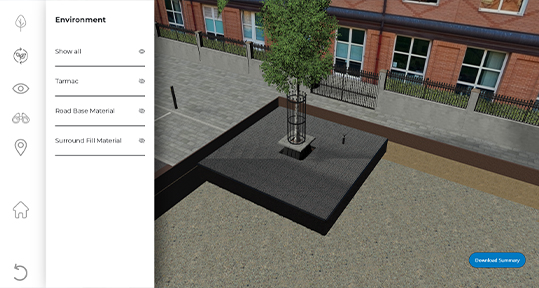In June 2019, parliament passed a legislation requiring the government to reduce the UK’s net emissions of greenhouse gases by 100%, relative to the 1990 levels by 2050. By doing so it will allow the UK to become a ‘net zero’ emitter. Trees have a positive role to play and are an important contributor when countering the greenhouse effect. Trees absorb Carbon Dioxide by photosynthesis, as well as process decay through bacteria, fungi and insects resulting in the wood being reconverted to Carbon Dioxide.
“Roughly 50% of wood by dry weight is comprised of carbon.”
By planting trees to reach the 2050 ‘net zero’ goal we need to ask ourselves, what are we striving for when planting trees into our environment? Trees are often referred to as ‘Public Goods/ Ecosystem Services’ due to the benefits trees provide.

During our most recent webinar with Keith Sacre, Director of Barcham Trees and Kenton Rogers, Co-Founder of Treeconomics, both describe how they have collaborated on a new initiative. Both industry professions have worked together to address common questions;
What species should be planted and where? What are certain species adaptations and tolerances? How much carbon does each tree species capture?
Monitoring and analysing data for carbon capture ratings on all the tree species within the Barcham catalogue, a Carbon Tree Tag has been produced. The tree tag demonstrates the credit rating of the tree species, providing information on the size of the tree, as well as how much carbon will be stored during different times of the tree’s life cycle. Other information such as a carbon capture breakdown and a break-even point are also included.
Barcham Trees also offer other means of collating carbon data such as their Carbon Capture Calculator located on their website. The calculator provides an insight into how many trees you will need to plant to mitigate your carbon usage. The reasoning behind the Tree Tag initiative is to understand how different trees store carbon, the potential opportunities we have for selecting the right tree species in our schemes and maximising the long-term benefits.
Kenton Rogers, outlines the role played by Treeconomics in producing and developing the trees tags explaining how the tool I-Tree ECO played a part in the creation process. The tool addresses local data that was manually inputted by Forest Research showing the local pollution data, weather data as well as collated field data that is used to calibrate the diameter of breast height (DBH).

This initiative is a key driver on how collaborative working ripples a successful outcome within the industry and the tree tags have been very well received. GreenBlue have had the privilege of working in alliance with both companies on schemes, events and industry literature; including our Cost Benefit Analysis publication. We believe collaboration is crucial in all sectors of our industry, open discussions between specifiers and local authority planners allow schemes to be planned effectively in order to flourish for many years to come.
GreenBlue value customer feedback and welcome open discussions to move forward as a business and meet the requirements of the industry. The industry leading ArborSystem is testament to this, the only tree package, combining all key elements for successful urban tree planting enabling mature canopy on a global scale.
Both Barcham Trees and Treeconomics also welcome feedback from the industry on their Carbon Tree Tags and continue to innovate easily identifiable information for all disciplines during this collective movement towards ‘net zero carbon’.




